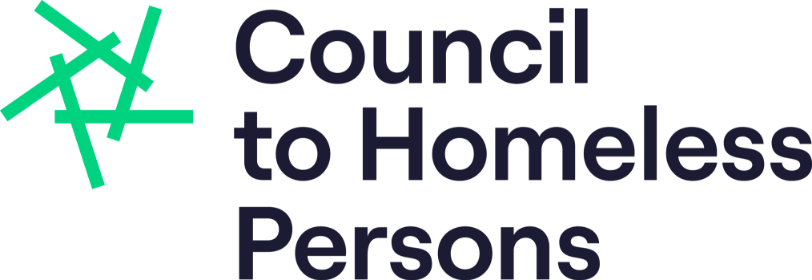by Kristina Angelakis, Daniel Sedgley and Justin Bennett – VincentCare Victoria
This article was originally published in the July 2024 edition of Parity magazine. Learn more about Parity including how to access full editions.
A Day in the Life
For the homeless single man, every day is a conflicting duel of uncertainty and repetition. With no stable roof to call his own, he begins his daily dance with the city streets, each step of Swanston Street echoing a sound that is never truly heard.
Street sweepers and police often disguise themselves as harsh alarm clocks to start his day in the concrete jungle. He treks Bourke Street, fueled entirely by the thought of five sugars and an instant coffee combo. ‘Barista blend? More like survival blend.’ Unable to jump on a tram due to his social anxiety and previous experiences of being painted as an ‘alien’ among other commuters, he picks up the pace as the 9am close time for breakfast draws near. The constant reminder of his insecurity is the weight of his bags containing his life, both physically and symbolically heavy on his shoulders. Amidst the daily grind his mind races with questions – ‘Where should I set up later?’ – ‘Will that second belongings stash down at Birrarung Marr be safe?’ – ‘How can I get enough cash sorted for today?’ Within a split second it seems as if time itself almost stops and, with the clarity that people only dream of, it hits him!!! His 9.30am appointment with Centrelink to have his payments reinstated is this morning. He does some fatigued calculations as he comes to a stand-still halfway along Bourke Street, ‘If I make the drop in by 8:55am, I can make a cuppa, smash it on the go and make it to Centrelink by 9.30am.’
Although the above anecdote is not written about one specific person, this story reflects the harsh realities faced by many single homeless men. Their lives are a testament to the inadequacies of current outdated policies and service models that struggle to meet 21st-century needs with effective support solutions. As societal and economic landscapes evolve, so too must our approach to homelessness. Social dynamics play a pivotal role in exacerbating homelessness. Combating social isolation and stigma requires community-driven initiatives that foster social inclusion and lasting support networks.
Preventative measures are equally crucial and can halt the downward spiral into chronic homelessness. Data-driven strategies ensure resources are allocated efficiently, maximising impact and effectiveness in combating homelessness.
Meeting the Need
VincentCare continues to deliver services for men while pushing forward with innovative design initiatives such as LGBTIQA+ including (Rainbow Tick accreditation) and our Reconciliation Action Plan. While striving to empower and enable more diverse populations, VincentCare also recognises that specific services are required to meet the needs of single men who still comprise a large proportion of homeless and ‘at-risk’ populations. For example, our unique drug and alcohol residential rehabilitation service in Fitzroy, Quin House, is a dedicated male identifying only rehab which focuses on men with episodic or current homelessness. The strong indication from clients in this program is that many current housing options are grim, often including dangerous boarding houses or inappropriate congregate living in sites with minimal staffing and support. Some men report they would rather be homeless than live in locations such as violent boarding houses where they feel unsafe and more likely to spiral into heavy drug use to cope with the situation.
VincentCare’s Ozanam House operates a unique open-access resource centre for people over 18 years old. The Homelessness Resource Centre (HRC) provides health services, food, and support services. A common issue identified in the Health Platform’s data for this cohort is the avoidance of treatment for medical and health needs. This includes dental, podiatric and diabetes management. Often it is not until health or medical conditions hit a crisis point that medical treatment is accessed. It is common to hear reports of clients not accessing medical care for 10 years or more, sometimes even 30-40 years.
To respond to this need for medical care, a recent project, Mobile GP, has begun servicing clients over 50 years old, including single men and homeless men, with physiotherapy, geriatric care, and GP support. Medical conditions left untreated for this cohort could significantly deteriorate and lead to premature death for men between the ages of 50-60. Our nation’s response to homelessness needs to consider the significant health needs of homeless single males who often age prematurely due to poor health.
Changing the Framework
Changes to program policy and innovative ways of working need to be considered by governments as well as the social services sector to address the changing needs of individuals in the community, including single men who are experiencing homelessness.
The Department of Human Services’ 2008 Opening Doors framework (1) defines the practice of prioritisation as an essential part of the allocation and distribution of support and resources to individuals experiencing homelessness. Its objective is to match those with these highest housing and support needs to commensurate levels of support and housing.
The practice of prioritising services and housing opportunities is currently an inevitable practice due to the significant shortages of housing and support resources available. This is a challenging ethical dilemma acknowledged across specialist homelessness services. The plight of every person who walks through homelessness ‘Entry Points’ weighs heavily on support services and specialist staff alike. The high number of single adult men, many who are sleeping rough and have chronic long-term experiences of homelessness, remains an enduring and significant concern.
While we acknowledge the necessity of prioritising and responding to the most vulnerable people walking through our doors, we must also be equally committed to calling out the social and economic factors that increase the risk to diverse and marginalised cohorts in our community, including single homeless men. We cannot underestimate the significant trauma that is manifested in the experience of homelessness for men. Sadly, their experience of homelessness, and even the homelessness system, can often result in further recurring traumatisation.
There have been many times, for example, that single men experiencing homelessness are placed into rooming house accommodation due to a lack of other options. Many of these rooming houses are poorly managed, often overcrowded, and do not meet regulatory requirements as identified in the Crisis in Crisis (2) report. The poor management and conditions in these premises often result in many men returning to sleeping rough as they are unable to remain safe in these environments.
Sleeping rough poses significant risks to safety, mental health, and physical health, and can lead to an increase in drug and alcohol use. An Australian Institute of Health and Welfare (3) report shows that 47 per cent of rough sleepers reported having mental health issues, compared with 34 per cent of other specialist homelessness services clients. Similarly, while 17 per cent of other specialist homelessness services’ clients reported a drug and/or alcohol issue, these issues were twice as prevalent among people sleeping rough.
Across Australia there are also multiple reports of homeless men, sleeping rough, who have been murdered (4) (5). This does not include the many unreported instances of murder, assaults, and other violence, nor does this diminish the high prevalence and increased risk and dangers to women who are experiencing homelessness including sexual assault, murder, and assaults.
The ‘Crisis in Crisis II: A Way Forward’ report (6) provides some evidence-based suggestions to improve access and support to many of the areas we have discussed in this article. These recommendations include:
- increased funding for accommodation
- ensuring individuals placed in rooming house accommodation are offered support to source long-term housing
- that further resourcing be provided by the Victorian Government to enable comprehensive implementation of the rating system for private accommodation providers.
The significant shortage of affordable and sustainable housing perpetuates the cycle of disadvantage for single adult males. We need governments to regulate rooming houses and increase investment in social and affordable housing for single men that is matched with a similar investment in specialist ‘Housing First’ style support services like ‘Journey to Social Inclusion’ and ‘Homes First’ in Victoria. We need police and local government to collaborate with the social services sector to provide a consistent, trauma-informed, person-centred response which does not further perpetuate stigma and works to minimise trauma for homeless men.
Addressing our contemporary challenge will take a coordinated effort that brings together tighter regulation, growth in safe and secure housing, and the development and proper funding of effective contemporary support models and practices.
Endnote
1. . Department of Human Services 2008, Opening Doors: Better Access for Homeless People to Social Housing and Support services in Victoria: Service Coordination Guide, https://www.nwhn.net.au/media/dkpbebgo/opening-doors-service-coordination-guide.pdf
2. Northern and Western Homelessness Networks 2019, A Crisis in Crisis: the Appalling State of Emergency Accommodation in Melbourne’s North and West, https://apo.org.au/sites/default/files/resource-files/2019-02/apo-nid222746.pdf?
3. Australian Institute of Health and Welfare 2018, Sleeping Rough: A Profile of Specialist Homelessness Services Clients, https://www.aihw.gov.au/getmedia/96b4d8ce-d82c-4149-92aa-2784698795ba/aihw-hou-297.pdf?v=20230605173201&inline=true
4. Toscano N and Dow A 2014, Homeless Man ‘Mousey’ Fatally Stabbed in Melbourne City Park, The Age, https://www.theage.com.au/national/victoria/homeless-man-mousey-fatally-stabbed-in-melbourne-city-park-20140105-30bzi.html
5. MacKenzie B 2023, Jury Hears Kevin Pettiford Considered his Killing of Two Homeless Men as Art, ABC News, https://www.abc.net.au/news/2023-11-10/homeless-murder-kevin-pettiford-police-interviews/103091770
6. Northern and Western Homelessness Networks 2021, Crisis in Crisis II: A Way Forward, https://www.parliament.vic.gov.au/
This article was originally published in Parity magazine. Learn more about Parity including how to access full editions.

